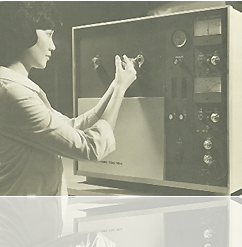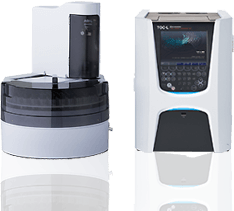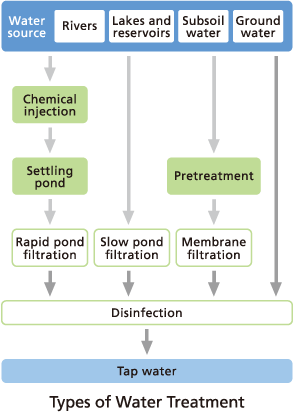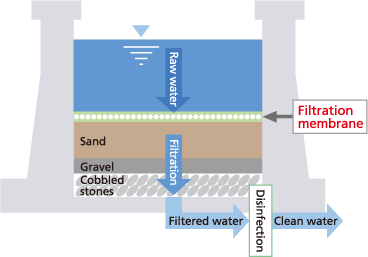

TOC Academy

Water Purification
In Japan, river and lake water is purified at water treatment plants to ensure it is safe for drinking.
Four main methods are used to treat the water–(1) rapid filtration, (2) slow filtration, (3) membrane filtration, and (4) only disinfection.

(1) Rapid filtration
This method cleans water by flocculating and precipitating small suspended particles, bacteria, and other substances using chemicals, and then filtering the supernatant through a sand layer in a filtration pond. This method is especially suitable for treating water from rivers, lakes, and other sources with relatively high turbidity levels and is the most commonly used method.

(2) Slow filtration
This method cleans water by passing it slowly through a sand layer in a filtration pond, where microorganisms propagated on the surface of the sand layer (biofiltration membrane) remediate the water. It is referred to as “slow filtration” because the flowrate through the filtration pond is slower than with rapid filtration. It is best suited to treating water sources with relatively good water quality and minimal variations in water quality.

(3) Membrane filtration
This method removes suspended particles, microorganisms, and other substances from water by filtering them through a microfiltration or ultrafiltration membrane.
• Microfiltration and ultrafiltration membranes have different pore sizes or numbers of layers.
(4) Disinfection
This method uses chlorine to only disinfect water obtained from groundwater water sources with good water quality.
Thus, safe tap water is supplied by using a water treatment method appropriate for the water quality of the given river, lake, groundwater, or other water source.


